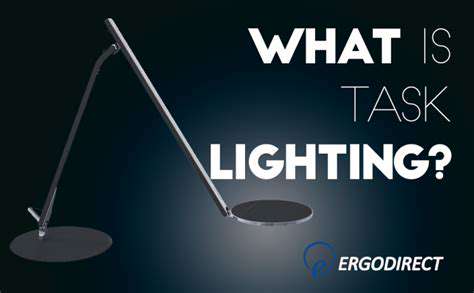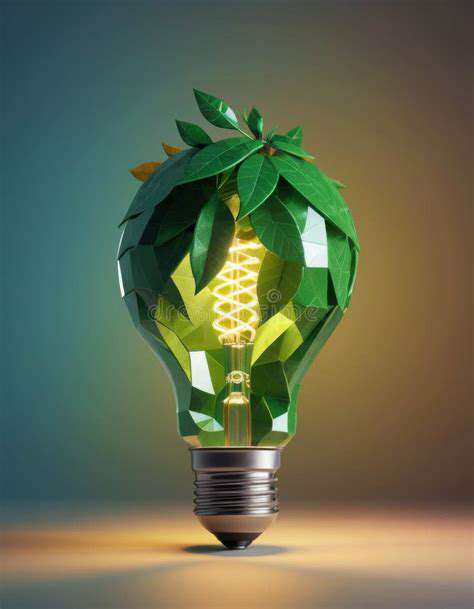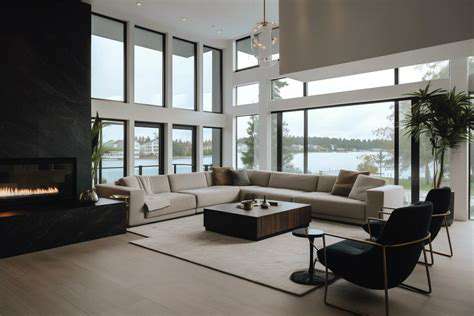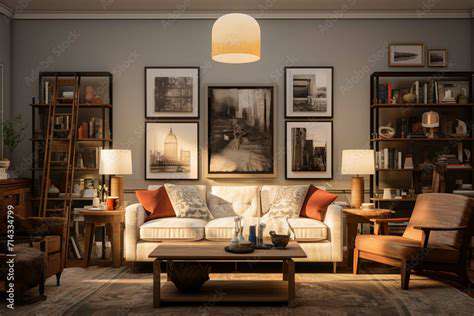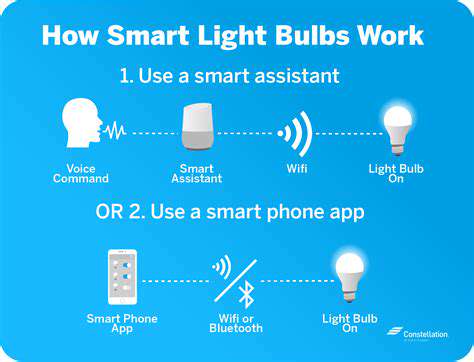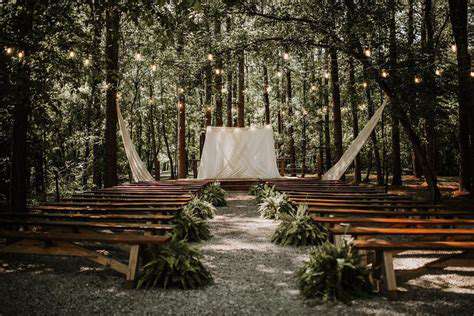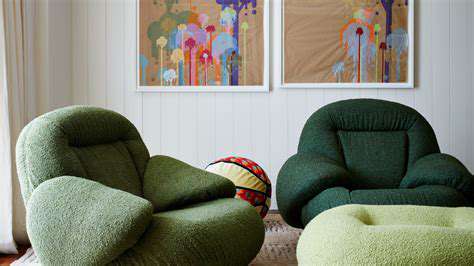Expert Home Lighting Design for Ambient, Accent, and Task Lighting
Outline
Ambient lighting provides essential illumination for safety and atmosphere.
Choose fixtures like chandeliers and recessed lights for stylish ambient lighting.
Brightness and color temperature impact the mood of a space.
Combine ambient lighting with accent and task lighting for harmony.
Layering light sources prevents harsh shadows and enhances space appearance.
Accent lighting highlights architectural features and artwork, enhancing aesthetics.
Placement of accent lights should enhance visibility and minimize shadows.
Mixing color temperatures creates a dynamic atmosphere in spaces.
Task lighting supports specific activities like reading and cooking.
Strategically placing task lights can reduce shadows and enhance focus.
Consider each space's unique needs when designing task lighting.
Integrate ambient, accent, and task lighting for a balanced environment.
Ambient Lighting: The Foundation of Your Space
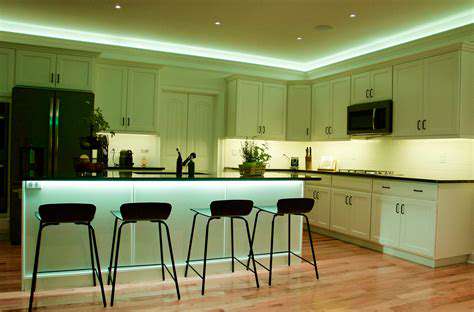
Understanding the Role of Ambient Lighting
Ambient lighting acts as the primary light source in a space, creating a baseline level of illumination. It's essential for navigating the room safely and enhancing the overall atmosphere. Without Proper Ambient Lighting, areas can feel gloomy and uninviting, making it crucial for both aesthetic appeal and functionality.
This type of lighting can come from various sources, including ceiling fixtures, wall sconces, or even natural light from windows. By effectively distributing light throughout the space, ambient lighting ensures that no corner is left in shadow, promoting a sense of openness and comfort.
Types of Ambient Lighting Fixtures
- Crown mounted ceiling fixtures
- Recessed lighting
- Chandeliers
- Floor lamps
- Wall-mounted fixtures
When selecting ambient lighting fixtures, consider their purpose and style. Fixtures like recessed lighting provide a clean, modern look, while chandeliers can add elegance to dining areas or entrance halls. It's essential to match the fixture with the overall design theme of the room to achieve a cohesive aesthetic.
Choosing the Right Brightness and Color Temperature
The brightness of ambient lighting plays a pivotal role in defining the mood of a space. Measured in lumens, the desired brightness will vary depending on the room's purpose. For instance, living rooms may require about 100-300 lumens per square meter, whereas kitchens may need 300-500 lumens for effective task management.
Additionally, consider the Color Temperature of your bulbs, measured in Kelvins. Warmer temperatures (around 2700K) create a cozy atmosphere, while cooler temperatures (above 4000K) provide a more energetic environment. Finding the right balance can significantly enhance your living experience.
Integrating Ambient Lighting with Other Types
Combining ambient lighting with accent and task lighting can create a harmonious interaction between different lighting styles. Ambient lighting serves as the foundation, while Accent Lighting highlights specific features such as artwork or architectural details. Task lighting, on the other hand, focuses on areas where activities take place, such as reading or cooking.
It’s essential to ensure that these different types work in tandem rather than competing with each other. For instance, using a dimmable fixture for ambient lighting allows you to adjust the overall light level when accent lights are activated to highlight artwork, creating a dynamic and engaged atmosphere.
Practical Tips for Effective Ambient Lighting Design
When designing your ambient lighting scheme, consider layering the light sources. Combining various types of fixtures helps achieve a balanced look. Aim to establish multiple sources to avoid harsh shadows or overly bright spots, which can detract from the overall experience.
Moreover, pay attention to the layout and functional areas of the space. Using dimmers can enhance flexibility, allowing you to adapt the lighting according to different activities or times of day. Regularly reassessing your lighting scheme can lead to ongoing improvements, ensuring your home remains welcoming and vibrant.
Accent Lighting: Highlighting Architectural Features and Decor
Understanding the Role of Accent Lighting
Accent lighting plays a crucial role in enhancing the aesthetic qualities of a space. It focuses on specific features or decor elements, drawing attention where it’s needed. For instance, in an art gallery, track lighting is frequently used to spotlight individual pieces, creating a stark contrast against the surrounding area and enhancing visibility. This strategic use of light helps elevate an observer's experience, encouraging them to engage more deeply with each piece.
The impact of accent lighting isn't limited to galleries. Homes can greatly benefit from this technique as well. By carefully selecting where to place accent lights, homeowners can emphasize architectural features, artworks, or decorative items, leading to a more dynamic and engaging atmosphere. A well-lit room should guide the eye naturally through various focal points, which accent lighting can effectively accomplish.
Types of Accent Lighting Fixtures
Several types of fixtures can be used for accent lighting, each offering distinct advantages. Common options include recessed lights, wall sconces, and spotlighting fixtures. Recessed lighting is popular because it can integrate seamlessly into the ceiling, providing a clean look while still delivering focused illumination. In contrast, wall sconces can add a decorative touch along with functionality, serving both as ambient sources and accent lights.
Additionally, track lighting can be a versatile solution. It allows for the adjustment of individual light heads, making it easy to change the angle and focus of each light. Such adaptability is essential in spaces where the display arrangements might change frequently. Each fixture type presents unique design opportunities, allowing you to tailor the lighting to your personal aesthetic and functional needs.
Floor lamps can also play a role in accent lighting, especially those with adjustable heads or unique shades that direct light towards specific areas or objects. This multifaceted approach provides ample opportunity for creativity in lighting design.
Placement Strategies for Effective Accent Lighting
Placement is key when it comes to achieving effective accent lighting. A common strategy involves highlighting features at eye level, allowing them to catch the viewer's attention naturally. For example, lighting that focuses on artwork should ideally be installed 6 to 12 inches above the piece, ensuring that shadows are minimized while enhancing visibility.
In addition, the distance from the item being highlighted also matters. The more intense the light, the further away it should typically be placed. A general guideline is to aim for about three times the height of the wall fixture being used to the point being emphasized. This ensures a proportional balance and prevents overwhelming bright spots that could detract from the overall look.
Color Temperature and Accent Lighting
The color temperature of accent lights can significantly affect the mood of a space. Warm light (around 2700-3000K) tends to create a cozy atmosphere, perfect for living rooms and bedrooms. Conversely, cooler light (4000K and above) can produce a more vibrant and energetic setting, ideal for kitchens or workspaces. It’s essential to match the color temperature of the accent lighting with the overall ambient light scheme.
In practice, using a mix of color temperatures can help create a dynamic environment, allowing certain features to stand out while maintaining a cohesive whole. For example, a room designed with warm ambient lighting can have cooler accent lights to highlight specific art pieces, effectively creating varied focal points.
Maximizing the Benefits of Accent Lighting
To maximize the benefits of accent lighting, consider layering it with ambient and task lighting. This approach ensures that not only are features highlighted but everyday activities are supported adequately. For instance, in a home library or office, a combination of recessed ambient lights, task-focused reading lamps, and strategically placed accent lights can create an inviting yet functional environment.
Another effective method is to incorporate smart lighting solutions, which allow for adjusting brightness levels and color temperatures according to the time of day or activity. This level of control can enhance not just aesthetics but also functionality, adapting the space to the user's needs.
Finally, regular maintenance of the lighting fixtures is vital to maintain their effectiveness. Dust buildup can diminish light quality over time, so cleaning fixtures regularly is critical, as is replacing bulbs promptly to ensure continuous performance. Overall, a thoughtful and well-maintained accent lighting strategy can significantly elevate the ambiance and experience of any space.
Task Lighting: Enhancing Functionality and Focus
Types of Task Lighting
Task lighting can be categorized into various types, each serving specific functions for different activities. For instance, table lamps are common in home offices, where focused light is vital for reading or writing. Under-cabinet lights in kitchens illuminate countertops, making food preparation safer and more efficient. Additionally, adjustable pendant fixtures allow for versatility and directionality, enabling users to target light precisely where it's needed.
Understanding the differences between these types is essential for effective lighting design. For an environment focused on detailed tasks such as sewing or crafting, a direct, bright light source reduces eye strain. Moreover, LEDs are a popular choice due to their energy efficiency and longevity, making them suitable for both residential and commercial applications.
Considerations for Task Lighting Placement
Placement is a crucial factor in optimizing Task lighting effectiveness. Ideally, the light source should be positioned to minimize shadows and glare, which can hinder visibility. For example, in a workspace, placing a desk lamp slightly to the left or right of the dominant hand prevents casting shadows while performing tasks. This strategic positioning is particularly important for individuals who spend long hours on projects, as proper lighting can significantly enhance focus and comfort.
Designing Task Lighting for Different Spaces
When Designing task lighting, it is essential to consider the specific needs of each space. In a kitchen, for instance, both overhead general lighting and under-cabinet lights work together to create a well-lit environment. The combination ensures that cooking surfaces are illuminated effectively without stark contrasts in brightness. In contrast, a home office might benefit from a mix of natural light and adjustable desk lamps to accommodate fluctuating daylight conditions.
Taking into account the ambient light conditions is also vital. For areas with lower natural light levels, more intense task lighting may be needed to ensure adequate visibility. Conversely, in well-lit environments, softer task lighting can help reduce eye fatigue without overwhelming the space. Each setting requires a thoughtful approach to achieve both functionality and comfort effectively.
Integrating All Three Lighting Types for Cohesion
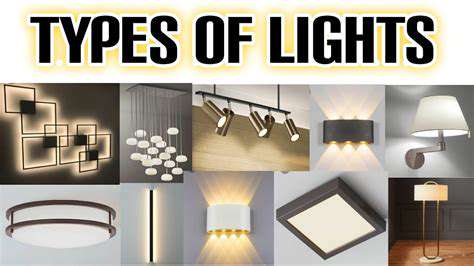
Understanding Ambient Lighting
Ambient lighting serves as the foundation of home lighting design. It provides a general illumination that fills the room, creating a base layer of light for all other functions. This type of lighting is essential for ensuring that spaces are navigable and comfortable, especially during evening hours.
When designing for ambient lighting, it’s crucial to consider the room’s size and shape. For instance, larger rooms may require multiple light sources such as ceiling fixtures, floor lamps, and wall sconces to evenly disperse light.
Incorporating Accent Lighting
Accent lighting plays a vital role in highlighting specific features or artworks within a home. This specialized lighting can effectively draw attention to beloved paintings, architectural features, or plants, enhancing the aesthetic appeal of a space. Implementing well-placed accent lights can transform an ordinary area into a captivating focal point.
- Types of accent lights include track lighting, spotlights, and wall-mounted fixtures.
- Choosing the right color temperature can also make a big difference in how features are perceived.
- For a cohesive look, ensure the accent lighting complements the ambient lighting.
Utilizing Task Lighting Effectively
Task lighting is designed to provide focused illumination for specific activities such as reading, cooking, or working. This type of lighting can significantly enhance productivity and functionality in spaces like home offices and kitchens. It’s important to position task lights at appropriate heights to reduce glare and shadows.
To create an effective task lighting setup, consider using adjustable lamps that allow you to direct light where it's needed most. Additionally, incorporating LED fixtures can also save energy while providing bright, clear light necessary for detailed tasks.
Striking the Balance Between Lighting Types
Integrating ambient, accent, and task lighting requires careful planning to achieve a balanced atmosphere in any room. Start with ambient lighting as the foundation, then layer in task lighting for functionality, followed by accents to create visual interest. Achieving this balance ensures that spaces are not only well-lit but also inviting and intriguing.
Take into account that varying room functions might demand different lighting layers. For example, a living room might benefit from soft ambient lighting complemented with bright task lighting for reading corners and accent lights for decor. Tailoring the lighting design to your specific needs will enhance both utility and style.

